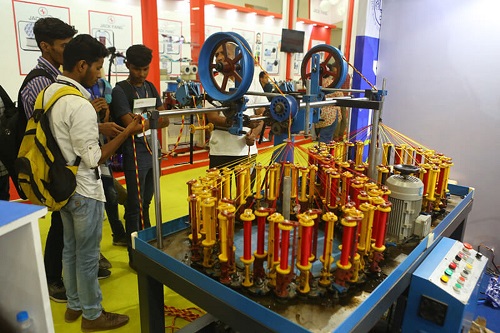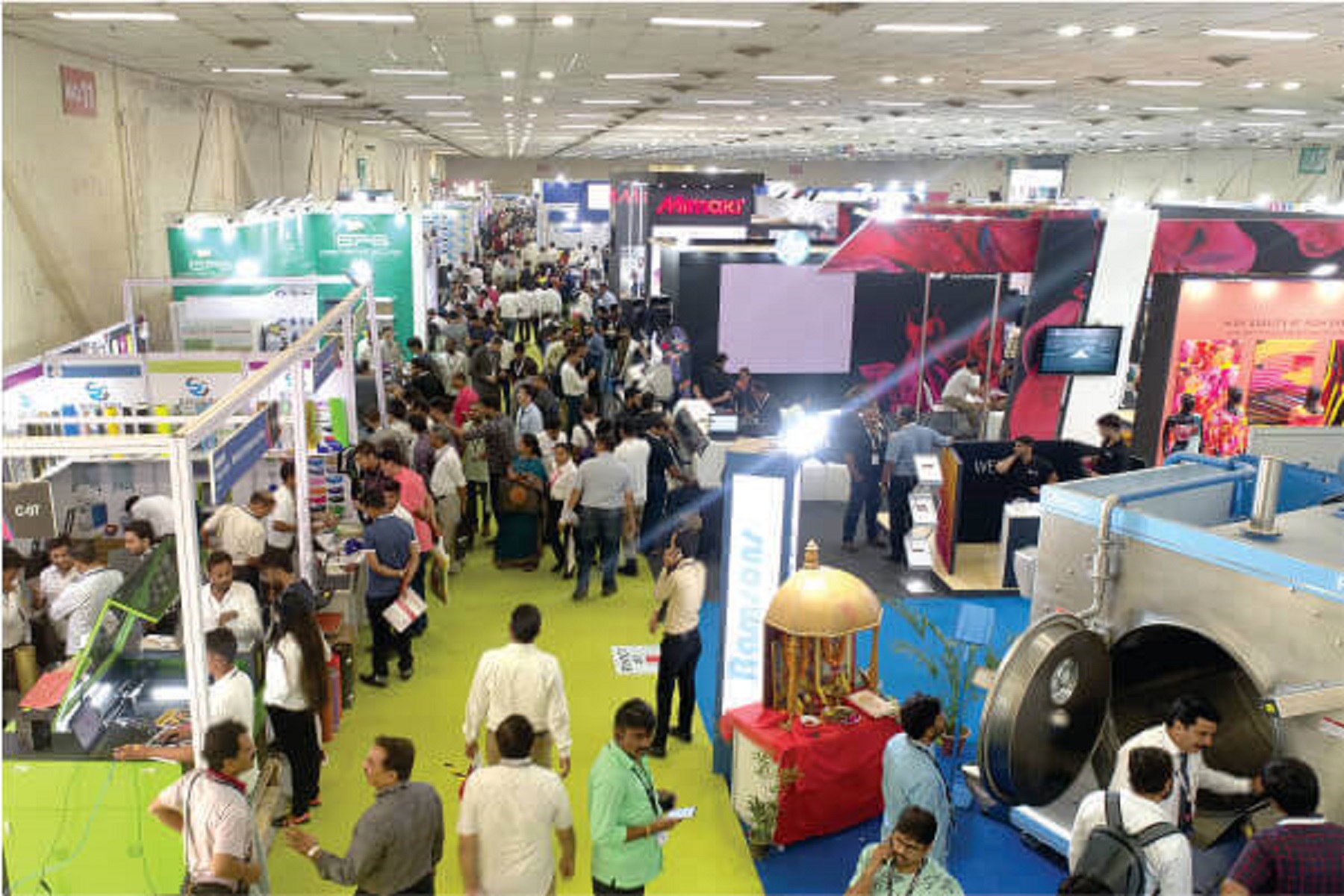FW
Field to Market: The Alliance for Sustainable Agriculture and the U.S. Cotton Trust Protocol have formalized a partnership to document and accelerate sustainable outcomes for US cotton production. The new partnership strengthens the ability of cotton growers and the value chain to drive continuous improvement, combining two of the industry’s leading sustainability assessment frameworks.
Together, Field to Market and the US Cotton Trust Protocol will assess progress against the U.S. cotton industry’s established environmental targets. By 2025, the industry aims to achieve targeted reductions in soil loss, water use, greenhouse gas emissions, and energy use, alongside increased land use efficiency and soil carbon. The Trust Protocol completed a successful project pilot in 2019, and has begun fully implementing its programs in 2020, with a goal to enroll at least 500 producers by December 2020.
DyStar has joined the ZDHC Foundation, which manages the Roadmap to Zero Programme with the aim of phasing out hazardous chemicals in the textile, apparel, footwear and leather value chain by promoting safer cheonmistry and driving innovation.
This initiative is a collective effort from the Global Chemical Industry Round Table (GCIRT), a group of the leading chemical solution providers in the textile and leather industry with the aim of driving the industry further to become more sustainable. The GCIRT members are: DyStar Singapore; Archroma; CHT Germany GmbH; Colourtex Industries; Huntsman Textile Effects; Kisco; Pulcra Chemicals Group; Rudolf GmbH; Tanatex Chemicals BV
As part of this initiative, Dystar will uploading its key products onto the ZDHC Gateway Chemical Module and support the ZDHC Manufacturing Restricted Substance List (MRSL) and the related “pyramid” conformity system designed to eliminate duplicative approaches. DyStar will actively engage in various task forces focused on supporting the continuous improvement programs of ZDHC.
 The last few months have been extremely challenging for apparel retailers. As sales stagnated and revenues declined, many had to survive on borrowed capital. S&P Global Market Intelligence study affirms, apparel retail industry drew down $7.2 billion credit during closures. Specialty retailers also drew $5.4 billion, department store sector drew $5.1 billion, online and direct-to-consumer retailers drew $2.3 billion, home goods retailers drew $1.7 billion and electronics retailers drew another $1.5 billion. Many retailers issued bonds, negotiated rent payments and stretched out vendor payments to preserve cash to stay afloat while stores were closed.
The last few months have been extremely challenging for apparel retailers. As sales stagnated and revenues declined, many had to survive on borrowed capital. S&P Global Market Intelligence study affirms, apparel retail industry drew down $7.2 billion credit during closures. Specialty retailers also drew $5.4 billion, department store sector drew $5.1 billion, online and direct-to-consumer retailers drew $2.3 billion, home goods retailers drew $1.7 billion and electronics retailers drew another $1.5 billion. Many retailers issued bonds, negotiated rent payments and stretched out vendor payments to preserve cash to stay afloat while stores were closed.
Some retailers including Ascena, RTW Retailwinds, J. Jill, Francesca's, Tailored Brands and others drew on their available credit. The draws that these companies made were essentially a run on capital. They were a source of liquidity for these retailers to run their business during shutdown. They took liquidity out of the system, creating multiple challenges for banks and other lenders, points out Bill Kearney, Senior Managing Director, Encina Business Credit. They also ate into profits, revolvers being lower-margin vehicles for lenders.
Bond issues to raise capital
As the situation stabilized, retailers also raised cash by selling new bonds. The first retailer to issue a new bond was the luxury department store Nordstorm, which closed on $600 million in new secured notes as well as an amended revolving line of credit in mid-April. This gave the retailer additional liquidity and flexibility in response to uncertainty related to COVID-19. As the discretionary retail world shuttered in response to the pandemic, appetite for retail debt picked up. Following Nordstrom many other retailers also issued new bonds.
$600 million in new secured notes as well as an amended revolving line of credit in mid-April. This gave the retailer additional liquidity and flexibility in response to uncertainty related to COVID-19. As the discretionary retail world shuttered in response to the pandemic, appetite for retail debt picked up. Following Nordstrom many other retailers also issued new bonds.
To save liquidity, some retailers also put off their rent obligations. Real estate investment trusts (REITs) were able to collect an average 28.9 per cent of April rent payments by late May, say Jefferies analysts. Most of this rent was put off into the future. Even if this rent is paid out later, it would eventually amount to a cash liability, says Raja Sokolyanksha, Vice President, Moody's. According to him, vendor payments are another bill retailers put off as they tried to maintain their cash positions. As these bills from retailers remain pending, money is going to soon have to go back out the door.
More loan write-offs likely in future
Some retailers who don’t need cash in the near term, maybe able to pay their debts as stores reopen. However, they are holding on to the cash from their draws on fear of a second wave of the virus hitting sales again. Hence, there are likely to be higher levels of loan write-offs in the coming quarters, says Secured Finance P Network. Heavy debt loads have a terminal impact on retailers. The interest that they have to pay on these loans could instead be used for upgrading website, omnichannel services, store remodels or maintenance, or to keep employees on staff.
Future uncertainty increasing loan burrowers
However, retailers who don’t avail of such loans also risk their unavailability in future. In future, these retailers might have less access to cash from their revolvers and other asset-based loans. Also, having less capital could reduce their eligibility to avail loans. This could force them to avail of more expensive and less flexible sources of capital. They also face the risk of sales plummeting again due to multiple deadly waves of mass COVID-19 infections. Unavailability of loans in such a scenario could cause bigger problems for them.
 As Coronavirus spread across the US, textile and apparel makers quickly diverted their production lines to manufacturing PPE items like face masks and hospital gowns that were in short supply. Though many apparel retailers and brands are anxious to return to core product lines, they may not be able to do so as most will have to first contend with the excess PPE inventory in warehouses. There are also retailers who plan to stick to their PPE production lines as they believe wearing face masks will now become a commonplace fixture in the American wardrobe. Prominent amongst these is Cone Denim which is shifting a part of its loom capacity to produce Maxima medical fabrics for its sister division, Burlington. The fabrics manufactured by the brand promote a more responsible, sustainable solution for the long term.
As Coronavirus spread across the US, textile and apparel makers quickly diverted their production lines to manufacturing PPE items like face masks and hospital gowns that were in short supply. Though many apparel retailers and brands are anxious to return to core product lines, they may not be able to do so as most will have to first contend with the excess PPE inventory in warehouses. There are also retailers who plan to stick to their PPE production lines as they believe wearing face masks will now become a commonplace fixture in the American wardrobe. Prominent amongst these is Cone Denim which is shifting a part of its loom capacity to produce Maxima medical fabrics for its sister division, Burlington. The fabrics manufactured by the brand promote a more responsible, sustainable solution for the long term.
Torchbearers of the trend
Another brand that has forayed into PPE manufacturing is Hanesbrand which recently launched two non-medical-grade face mask styles, Cool Comfort and Signature Stretch- to-Fit. The company also supplies the US government with over 320 million reusable cloth face coverings and more than 20 million reusable long-sleeve medical gowns. It plans to create an ongoing product line of basic personal protective garments to serve its consumer in the commercial and governmental markets.
to-Fit. The company also supplies the US government with over 320 million reusable cloth face coverings and more than 20 million reusable long-sleeve medical gowns. It plans to create an ongoing product line of basic personal protective garments to serve its consumer in the commercial and governmental markets.
Similarly Gildan Activewear began manufacturing PPE in April to address the shortage in the market. The company supplies non-medical face masks to the health care sector. It also produces non-medical face masks and isolation gowns for various retailers to be distributed to health care organizations. In future, it plans to produce more than 150 million masks and gowns to service the consortium and retailers under this effort.
Emergence of a new thought process
Sherry Wood, Director-Merchandising, Texollin believes the pandemic has changed the thought processes of both the public and industry. It has forced manufacturers and retailers across the country to connect and contact each other through various platforms, organizations and associations.
The pandemic also created a new generation of leaders who are constantly pushing new ideas. The importance of PPE products has increased many folds giving manufacturers an opportunity to improve their skills, adopt new technologies and other new innovative ways to be ahead of the game. Its ability to retool overnight to making masks and gowns has created many success stories in the US’ PPE industry. One of these is Under Armour, the brand recognized the need for performance solutions that would support athletes navigating the pandemic climate. It began manufacturing face masks designed by its innovation team and distributed millions of units of PPE to health care and community organizations to help fight the spread of COVID-19.
With an objective to support the swift revival of the garment and textile industry, India’s most comprehensive exhibition on garment and textile manufacturing supply chain – GartexTexprocess India is back with new dates for its Delhi and Mumbai editions.

Following detailed consultations with industry stakeholders, organisers - MEX Exhibitions and Messe Frankfurt Trade Fairs India, have announced new dates for GartexTexprocess India’s Delhi and Mumbai editions. Originally scheduled in August 2020, the New Delhi edition of Gartex Texprocess India has now been pushed ahead to December 17-19, 2020 at India Expo Mart (IEML) in Greater Noida, Delhi-NCR, whereas the Mumbai edition will take place from March 19-21, 2021 at Bombay Exhibition Center, Mumbai.
The organisers believe that the new dates will ensure optimal revival of trade and provide additional time to exhibitors to plan their exhibits and product launchesmore effectively in the current environment. The decision which was taken on the basis of feedback from exhibitors, partners and industry associations, also aims to ensure that the event serves its objectives of business, knowledge and tech-exchange in a more meaningful way when the entire textile fraternity can come together.

Exhibitions are a crucial tool to revive businesses and boost economy. Networking in a safe and controlled environment is an effective way for industries to get back on track, especially for the garment and textile industry that seesGartexTexprocess as an indispensable channel for marketing, showcasing innovations and forging valuable partnerships in the long run.
GartexTexprocess India is a trusted industry platform offering immersive experience to both exhibitors and visitors and has transformed the way stakeholders operate in garment & textile machinery industry. The key business event comes packed with the experience and expertise of two major exhibition organisers and draws thousands of quality visitors in every edition. The three-dayfair provides a holistic experience to participants not justby way of an extensive display of exhibits, but also through a series of seminars and workshops aimed at facilitating dialoguethat highlighton-going trends, opportunities and challenges forthe business of textiles. Prominent highlights of the show include Denim Show, Embroidery Zone, Garmenting & Apparel Machinery Zone, Digitex Show, India Laundry Show and Fabrics & Trims Show.
The Aldersgate Group, an alliance of dozens of business and civil society leaders which also includes Tesco and John Lewis, says that all post-Brexit Free Trade Agreements (FTAs) should include reciprocal commitments to the Paris Agreement and a binding non-regression clause.
Significantly, the UK is currently negotiating an FTA with the US – the only major economy not to have committed to the Paris Agreement, after the Trump administration pulled the nation out of the deal.
Entitled ‘Seize the Moment’, the Aldersgate Group’s report says all future FTAs should also contain measures to remove barriers to the trade of low-carbon goods and environmental services, and a legally binding right for either party to increase environmental or climate standards.
This would help both parties reap their fair share of the global low-carbon goods market, forecast to surpass £1 trillion (US$1.25trn) by 2030, while ensuring that they can respond to future climate events and improved scientific research.
Aside from the FTAs, the report urges the upcoming Trade Bill to guarantee that all agreements receive adequate parliamentary scrutiny and stakeholder engagement “well ahead” of their ratification to allow time for in-depth sustainability impact assessments. The report also highlights the need to “look beyond FTAs" and also use bilateral trade negotiations and multilateral bodies, such as the UN and the World Trade Organisation (WTO), to boost low-carbon trade.
Finally, the Aldersgate Group reiterates its demands for stronger domestic policies designed to spur a just low-carbon transition which boosts the national economy. The publication of the report comes less than a week before the UK is due to begin FTA agreements with Australia and New Zealand. New Zealand, like the UK, has enshrined a 2050 net-zero target in law. Australia is currently considering a 2050 net-zero target.
The American Apparel & Footwear Association (AAFA) has written to the US Federal Trade Commission urging it to provide a timely update to its decades-old product labeling regulations to better leverage digital solutions.
AAFA says consumer experiences could be improved by making product-specific details more readily-available to the tech-savvy consumers of today. It says scrapping product labeling would reduce the environmental impact of apparel manufacturers, brands and retailers.
As much of the information included in product labels and packaging is subject to a series of legislative and regulatory requirements, AAFA believes a timely-update is in order to stray from what can be large, irritating product labels, to instead harness technologies like QR codes, URLs and other scanning solutions that are readily available.
The Vietnam National Textile and Garment Group (Vinatex) has forecasted its consolidated profit before tax this year will fall by half to VND 382 billion year on year due to the negative impact of the COVID-19 pandemic. This is the lowest consolidated profit before tax over the past four years, according to the company. Consolidated revenue is estimated to decline 27 per cent to VND 14.64 trillion compared to last year’s figures, according to reports presented at its annual general meeting this year.
In the report, Vinatex has also reduced its revenue targets of parent company by 5 per cent to about VND 1.33 trillion and profit before tax by 56 per cent at 130 billion compared to 2019 because of difficulties in production and business during and after the pandemic. In the 2020-25 period, the group must adjust its development strategy because it faced competition in technology but not in price 10 years ago.
For its development in this period, Vinatex plans to promote mergers and acquisitions, and restructure its businesses because the group's current business and production model will become inefficient, according to a Vietnamese media report.
Besides continuing divestment, it would also buy shares of other companies as well as invest in newly-established enterprises necessary for the development strategy.
The value of fabric imports by the US from January to April 2020 declined 11.37 per cent, revealed latest reports by OTEXA. According to the report, the country imported $1.83 billion worth of fabrics during the period. However, volume-wise decline was less than the previous year. The country imported 4,023.27 million SME of fabrics during the period. As far as major exporting destinations are concerned, China plunged significantly in both volumes and values by 23.07 per cent and 29.30 per cent, respectively.
Korea Republic, the second largest fabric exporter to the US, fell in its value-wise fabric exports but shipped more volumes of fabrics than the last year. Noting 8.22 per cent surge, Korea Republic shipped 416.67 million SME fabrics to the US worth $180 million which fell 6.16 per cent. India too fell by 4.21 per cent to ship 531.72 million SME of fabrics to the US in the review period and clocked $155.18 million revenue which is 6.78 per cent less than the same period of 2019.
In contrast, non-traditional fabric exporting countries such as Cambodia, Myanmar, Indonesia, Australia, Malaysia and Denmark registered huge growth in their volume-wise fabric exports to US. Some of these even noted growth in value-terms.
APTMA demanded competitive pricing for energy in Pakistan including electricity and gas. It has also urged the government to reduce the rate of sales tax and ensure quick issuance of refunds. According to APTMA, Pakistan’s textile exports are likely to reach $17.5 billion in the financial year 2020-21 as textile manufacturers are receiving orders from various exporting countries that could result in utilization of 80-90 per cent production capacity by next quarter.
The export earning of the textile sector is likely to increase by $3 billion this year keeping in view the demand in the international market, which will not only increase exports of the sector with a possible value of $17.5 billion but it could enhance the overall exports of the country by $27 billion in the next financial year.
The export earnings of the textile sector will also support the dwindling foreign exchange earnings in case of dwindling inflows of remittances, the letter added. However, textile exporters could also achieve these benchmarks if the government revisits the financial bill and introduces incentives for the sector.












